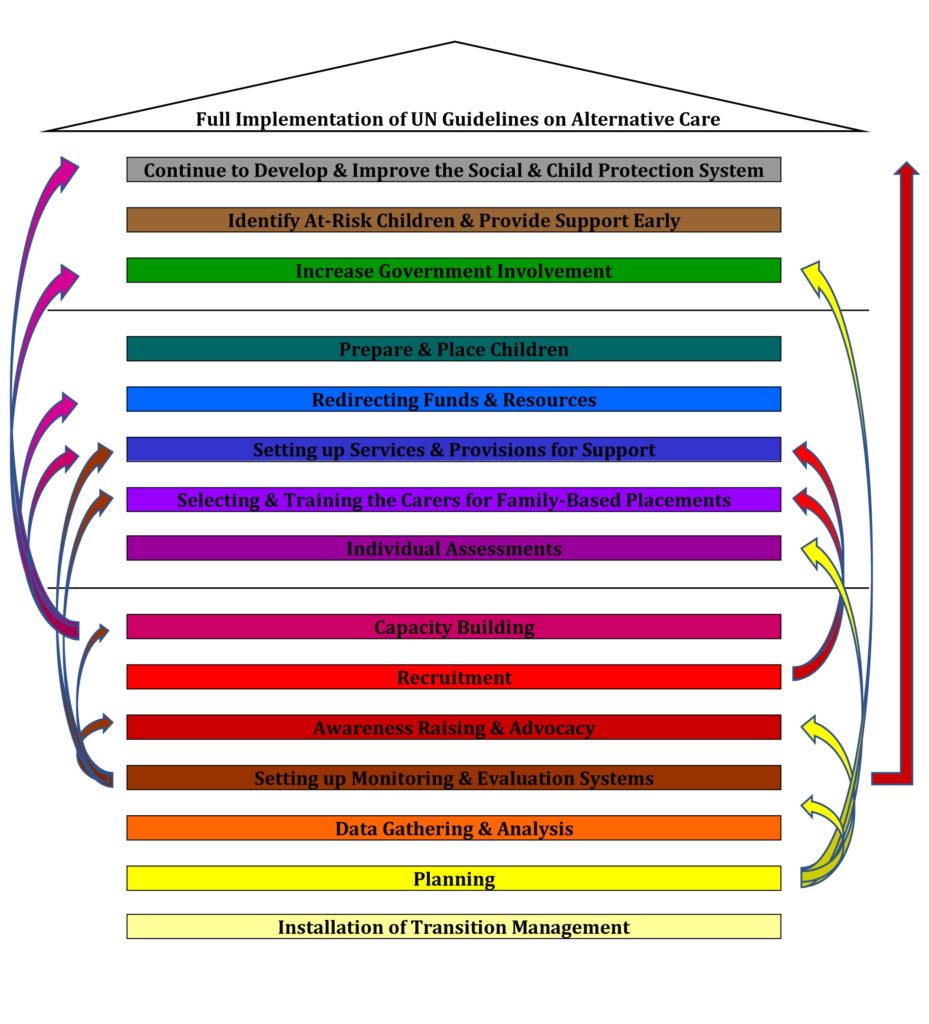Part 11 of the explanation with the ToC: No matter whether you are working on the national, district or grassroots level, individual assessments need to be done for every single child, to be able to determine what his or her situation is and what kind of placement is in his or her best interest.
During the gathering of stock information, at the data-gathering stage, some basic information was gathered about the children in institutions – though, at the national level, this will most likely only have been for a sample – but to be able to make decisions about the placement of a child and to write an individual care plan, you need a lot more information.
Trained professionals will have to spend time with individual children – a specific person assigned to work with a specific child, because if the child is confronted with a lot of different people asking questions, he or she is far less likely to be willing to open up and provide the information needed – and gather information about the child’s strengths and struggles, about the important relationships in his or her life, about family connections, school, health, etc. This is something that is going to require a lot of time and that needs to be done in a child-friendly way that is appropriate to the age and level of understanding of the child.
Information needs to be gathered from the child, but also from people who know the child well like caregivers, teachers and health professionals. And when possible, the information should also be gathered from – and about – the child’s family. If the child still has living family members, these should be approached. The aim is both to gather information about the child from the family, and to gather information about the family. If it looks like family members might be able to take care of the child, the family needs to be assessed to find out if it would be safe for the child to live with them, if they would be able to cope with raising the child, whether they might need support to be able to raise the child – and if so, what kind of support would be needed. Again, it should be a dedicated caseworker, who visits the family on several occasions and gets to know them better to be able to decide on whether it would be in the child’s best interest to return to his or her family.
Gathering this information is not the end of the process. Information gathered from various different sources needs to be put together and analysed. A meeting needs to be held to discuss this information and to make a decision on what kind of placement would be in the child’s best interest. If relevant, family members can be invited to be part of this meeting, and the child should be allowed to be part of and speak up at this meeting too. If the child is attending the meeting, a person should be appointed to help him or her during the meeting and to speak up for him or her if the child wishes something to be said, but is unable or unwilling to do so him- or herself.
When making a decision about placement of the child, the first option that needs to be considered is family reintegration and how that might be made to work – possibly with support -, only if that is not an available option or if it is not safe for the child to return to his or her own family, should other family-based options be considered, or in the last instance, community-based options in small scale setups.
When a decision has been made about the placement of a child, an individual care plan needs to be written with details about what is going to happen, where the child is going to go and what needs to be in place to make sure the child is properly supported. This care plan needs to be regularly reviewed to make sure that it is still relevant, and if it is not, it has to be adjusted.

If you would like to read the explanation with the model from the very start, you can go HERE.
Please share this blog to help spread awareness


I’m not that much of a online reader to be honest but your sites really
nice, keep it up! I’ll go ahead and bookmark your website to come back in the
future. All the best